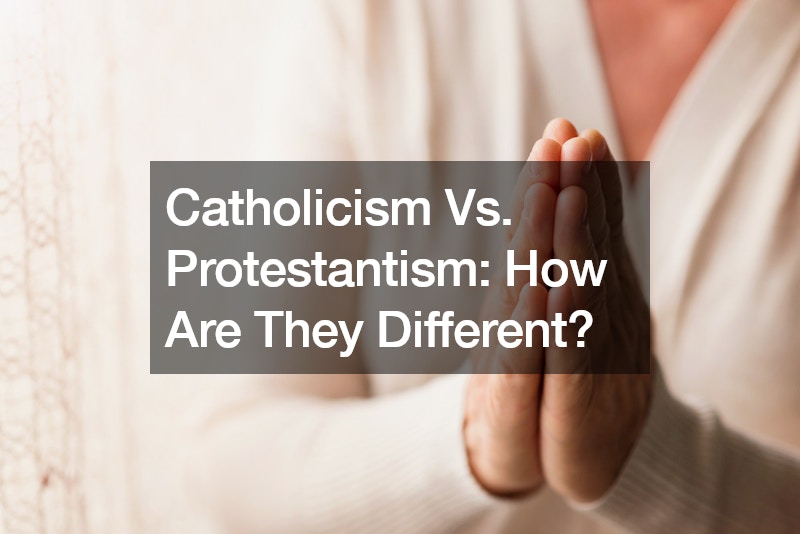
When exploring the rich tapestry of Christianity, two major branches stand out: Catholicism and Protestantism. These traditions, while sharing a common foundation in the teachings of Jesus Christ, have evolved over centuries into distinct theological and cultural entities. Understanding the differences between Catholicism and Protestantism offers insight into the diverse expressions of Christian faith around the world.
Historical Origins
Catholicism traces its origins back to Rome around 30 A.D., following the crucifixion of Jesus Christ.
The early Catholic Church viewed itself as the continuation of Jewish law and the teachings of Christ passed down to the apostles. In contrast, Protestantism emerged in the 16th century during the Reformation, ignited by figures such as Martin Luther in Germany. Luther’s criticisms of perceived corruptions within the Catholic Church led to a movement seeking to reform and purify Christianity.
Theological Differences
One of the key theological distinctions between Catholicism and Protestantism is the concept of authority. Catholicism upholds the authority of tradition alongside scripture, as interpreted by the Magisterium, the teaching authority of the Church. Protestants, on the other hand, adhere to sola scriptura, emphasizing the primacy of scripture alone as the ultimate authority in matters of faith and practice.
Sacramental Practices
Catholicism places a significant emphasis on the seven sacraments, including baptism, confirmation, Eucharist, reconciliation, anointing of the sick, matrimony, and holy orders. These sacraments are regarded as channels of divine grace, administered by ordained clergy within the Church hierarchy. In contrast, Protestantism generally recognizes only two sacraments: baptism and communion (also known as the Lord’s Supper or the Eucharist). Protestants view these ordinances as symbolic rituals commanded by Christ, rather than as means of imparting grace.
Leadership Structures
Catholicism maintains a hierarchical leadership structure with the pope as the spiritual head of the Church, believed by Catholics to be the successor of Saint Peter and possessing infallibility in matters of doctrine. Below the pope are bishops, priests, and deacons, who serve within the ordained ministry. In Protestantism, leadership varies widely across denominations, but there is generally an emphasis on the priesthood of all believers. Pastors or ministers serve as spiritual leaders within congregations, with varying degrees of authority depending on denominational polity.
Worship Styles
Church services in Catholicism often feature elaborate rituals, liturgical prayers, and the veneration of saints and relics. The use of incense, statues, and icons contributes to a sense of reverence and awe. In contrast, Protestant worship services tend to be simpler, with a focus on preaching, congregational singing, and prayer. Visual symbols are less prominent, and there is often greater flexibility in worship style, ranging from traditional hymns to contemporary music.
Liturgy and Church Calendar
Catholic liturgy follows a prescribed order of worship, guided by the liturgical calendar, which includes seasons such as Advent, Lent, Easter, and Pentecost. These liturgical seasons mark key events in the life of Christ and the Church. Protestant worship may also follow a liturgical structure, especially in high-church traditions, but there is greater variability in worship formats across denominations. Protestant churches typically observe major Christian holidays such as Christmas and Easter, but the emphasis may vary.
Global Demographics
With approximately 1.3 billion adherents worldwide, Catholicism is the largest Christian denomination, with significant populations in Europe, the Americas, and Africa. Protestantism, with an estimated 920 million to 1 billion followers, is also globally distributed, particularly strong in North America, Europe, and parts of Africa and Asia. The demographic distribution reflects historical and cultural factors, as well as missionary efforts.
Understanding the Theological Variances in Salvation and Grace
Salvation and grace stand as fundamental pillars in Christian theology, yet Catholicism and Protestantism diverge significantly in their understanding of these concepts. In Catholic doctrine, salvation is often viewed as a cooperative effort between God’s grace and human works. The Catholic Church teaches that salvation involves participation in the sacraments, adherence to moral laws, and cooperation with divine grace. This perspective emphasizes the role of good works and the sacramental system, including baptism, confession, and participation in the Eucharist, as means of obtaining salvation.
In contrast, Protestant theology, particularly within Reformed and Evangelical traditions, emphasizes salvation by grace alone (sola gratia) through faith alone (sola fide). According to Protestant doctrine, salvation is solely a gift from God, received through faith in Jesus Christ as Lord and Savior. Good works are seen as a fruit of salvation rather than a means to earn it. This perspective underscores the sovereignty of God in the process of salvation and emphasizes the centrality of faith in Christ’s atoning work on the cross.
Exploring these theological variances sheds light on the diverse interpretations of salvation and grace within Christianity, highlighting the nuanced differences between Catholic and Protestant beliefs and practices.
Conclusion
While Catholicism and Protestantism share a common faith in Jesus Christ, they differ in theology, worship practices, and ecclesiastical structures. Understanding these differences enriches our appreciation of the diverse expressions of Christianity throughout history and across cultures. Whether through the solemn rituals of Catholic liturgy or the heartfelt preaching of Protestant sermons, both traditions offer pathways to spiritual growth and devotion.
Exploring the nuanced distinctions between Catholicism and Protestantism invites us into a deeper understanding of Christian faith and tradition. Whether one finds solace in the sacraments and traditions of Catholicism or the emphasis on scripture and personal relationship in Protestantism, both paths lead believers on a journey of spiritual discovery and devotion.
.

